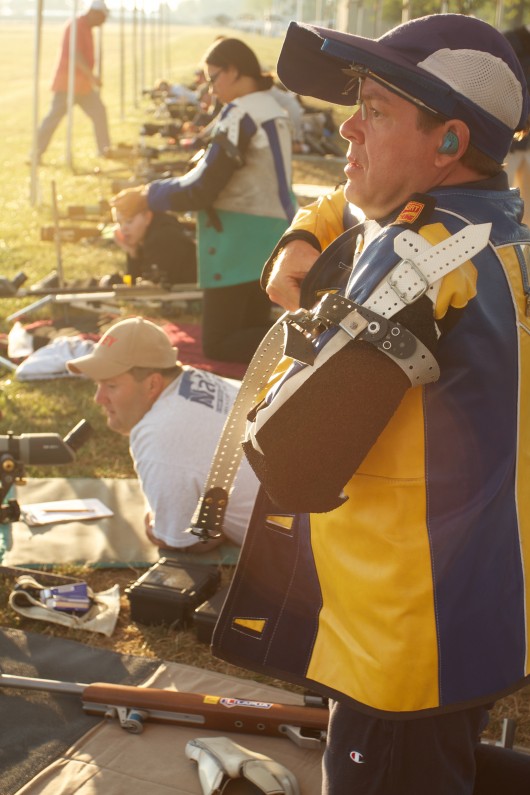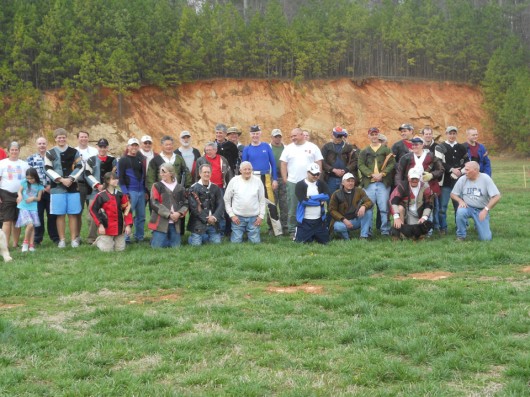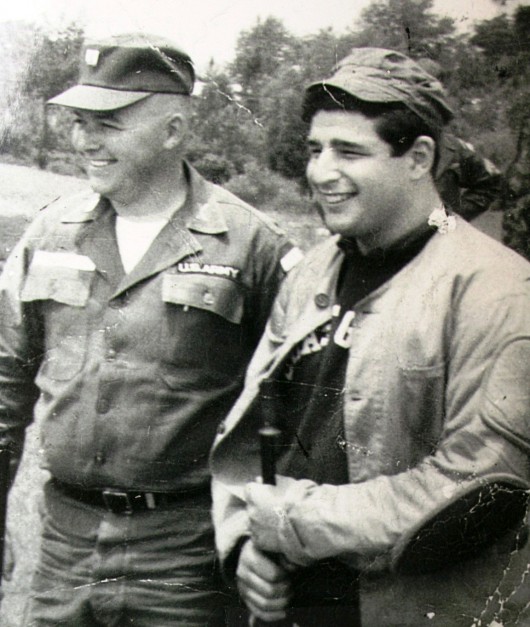by Hap Rocketto
The Lord Roberts Centre at Bisley Camp is the home of the National Smallbore Rifle Association of Great Britain. It is a very tidy building that was erected for the Commonwealth Games and houses the offices of the organization, an air rifle range, the Malcolm Cooper Range, and a hockey rink and swimming pool. The latter two faculties are part of the multipurpose use of the building which allows it to stay financially solvent. The Cooper range is a fully equipped international range with electronic targets. During a tour of the range I started to think about all of the shooting I had done in the past.
During the course of my shooting career I have fired at countless ranges, some no longer in existence, and at countless types of targets, some no longer in existence. I have shot on the 5V target when it was the highpower target, lived through three changes of ISU/ISSF 50 meter target, two changes in the United States gallery international target, and seen the A-17 ‘bucket bull’ soldier on untouched for as long as I can remember.
I have shot at targets tacked to cardboard backstops, hung on racks, suspended from target carriers, run back and forth on electric trolleys, fed on strips or rolls through the openings of Gehmann and Spieth boxes, and electronic targets that are nothing more than electrical grids woven into black rubber circles.
The electronic score targets are neat because they give you a television monitor to view your shot location. The more sophisticated systems automatically calculate your score and then transmit it to a central computer which records it, updates competitor rankings, and has the capability of displaying, at lightening speed, the current standings to the spectators in the gallery on overhead screens. I marvel at how they work as they are a bit more sophisticated than to ubiquitous RIG-EZ Scorer which usually determines the value of close shots for the hoi polloi who bang away in dark and dank shooting galleries or outdoor club ranges.
The two scoring devices are about as far apart technologically as the pencil, which I think is a remarkable technological achievement and writing the first drafts of Hap’s Corners, to the word processor on which I hunt and peck out the final product. Yet, surprisingly enough, the simple scoring plug is a more advanced technologically than it might appear.
The earliest patent on a “Bullet Hole Gauge” was registered in 1937 by Frederick M. Hakenjos and Charles Baynard Lister. It is no surprise that the patent was assigned to the National Rifle Association as Lister was the National Secretary of the organization and is memorialized by the NRA with the C. B. Lister Memorial Trophy awarded annually to the National Indoor Sectional National Smallbore Rifle Four Position Champion. The gentlemen’s device was fairly straight forward in design, a shaft that had a .22 nose on one end, a .38 nose of the other, and a .45 sliding head on the shaft which, when slid down, fit over the .22 nose to plug shots of the larger caliber.
Russell Wiles, Jr., a noted Chicago rifleman, went one step better when he filled out a patent application for an “improved bullet gauge” in the fall of 1941. Wiles and his father has several patents for firearms related items including a .22 rimfire cartridge, a rifle trigger, a wind indicator that affixed to the barrel of the rifle as well as a target rifle that was of interest to Winchester. They even came up with an improvement on the simple automotive dip stick. Wiles’ scoring gauge improvement simply studded a plastic magnifier with the various sized plugs needed to determine if a shot was in or out. One simply inserted the plug into the bullet hole and read it’s location through the plastic. It was an improvement but it was bulky and cumbersome to use.
Not willing to rest on his laurels Wiles continued to think of ways to improve his scoring device. In the spring of 1953 he came up with what would become the definitive design for manual scoring plugs. He incorporated his magnifying block with a single shaft design based upon an impact tool that combined the functions of a center punch and nail set, designed by Sheldon T. Williams in 1921. The new device was a single cylindrical shaft with a tapered nose. A flange of the appropriate caliber was capped by a plastic magnifier which allowed the margins of the shot hole to be precisely located. Two major innovations, based on Wiles’ observations over years of competition, roughening the surface of the plug and adding a coil spring handle were incorporated in the new design.
Roughening the shaft of the plug, rather than machining it smooth, allows it to catch on the fine tears and fibers in the paper surrounding the bullet hole. A single shot offers a firm resistance as the paper fibers and striations on the plug’s surface firmly grip each other. It the hole contains two or more shots, a double, the grasp is not as firm and a scorer can feel that the seemingly single shot hole is actually a multiple shot hole.
Attaching a spring to the shaft as a handle allows the plug to be inserted directly into the shot hole with out the concern that pressure is being added unevenly causing the plug to move one way or the other. This insures the fairest possible placement. Additionally, the soft coil spring gives the scorer a second method of detecting a double for there is less resistance felt when the plug is withdrawn from a double than a single shot hole.
As a fan of Gilbert and Sullivan, and the D’Oyly Carte Opera Company, the words of Little Buttercup singing to Captain Cochran aboard the HMS Pinafore come to mind when I think of the hidden elegance and technological innovations found in the seemingly simple RIG EZY-Scorer, “Things are seldom what they seem.”






